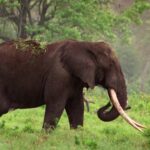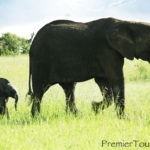The Great Migration – Frequently Asked Questions
What is the Great Migration?
The wildebeest migration between the Serengeti and Kenya’s Masai Mara reserve is one of the most mesmerizing natural spectacles on Earth. Nowhere else will you get the opportunity to behold so many wildebeest in one place.
Where can I see the Great Migration?
The Great Migration begins in the Serengeti Plain, which is situated along Tanzania’s northern border with Kenya. The awe-inspiring wildebeest migration moves across the plains to the grasslands of the Masai Mara reserve in Kenya.
When does the Great Migration Occur?
The wildebeest migration occurs annually, when more than a million of these gentle creatures, accompanied by tens of thousands of zebras in addition to other herbivores, arrive en masse from Tanzania’s Serengeti.
Furthermore, the Great Migration never ends. The herds remain in the southern section of the Serengeti between January and March to feed on the lush sprawling plains of fresh grass before moving northward. By June, after the big rains in the main sections of the Serengeti Park, the herds reach Grumeti, an isolated area in the north. The herds proceed northward into Kenya, fording rivers along the way.
How is it best to see it?
Kenya’s best-known reserve, the Masai Mara, is home to the undulating hills, rolling grasslands, and rivers that act as a back-drop for the migration. Masai Mara offers game drives in a minibus or a four-wheel drive vehicle with an open roof hatch. Since walking isn’t allowed in Serengeti National Park, you will need to make arrangements for game viewing with pop-up tops to fully immerse yourself in the action of this natural spectacle. Another way to see the wildebeest migration is from above, in a hot-air balloon. Most lodges in Masai Mara National Reserve offer early-morning hot-air-balloon rides.
Why do the herds migrate?
Each year, the wildebeest and other herbivores follow the rains in a clockwise route that spans more than 1,000 miles. Accordingly, the amount of nutrients from the ecosystem’s available fresh grass is a major factor that influences this geographical trajectory each year.
What else can I expect to see?
The river crossing between Kenya and Tanzania represents a particularly daunting challenge for the plain animals that are forced into dangerous waters rife with hungry crocodiles. Ultimately, the Great Migration of wildebeest amounts to a massive feast for the crocodiles that inhabit the Grumeti and Mara rivers. Some of these crocs can grow up to 18 feet in length on their rich diet of wildebeest.
When is the best time to see the Great Migration?
Because the migration is ongoing, you can go any time of the year and still see this natural spectacle in all its glory. The busiest travel timeframe occurs from July through October, so try to decide how much you prioritize visiting when fewer vehicles will be out on drives. The months of April and May are known for long rains, making it difficult to see the herds on the move. If you want to see a river crossing, the best timeframe is sometime between July and October, at which point the herds must cross the Mara River in their search of fresh grass. The crowds are thickest the Masai Mara National Reserve around July when the Great Migration reaches the opposite side of the Mara River’s main ford.











